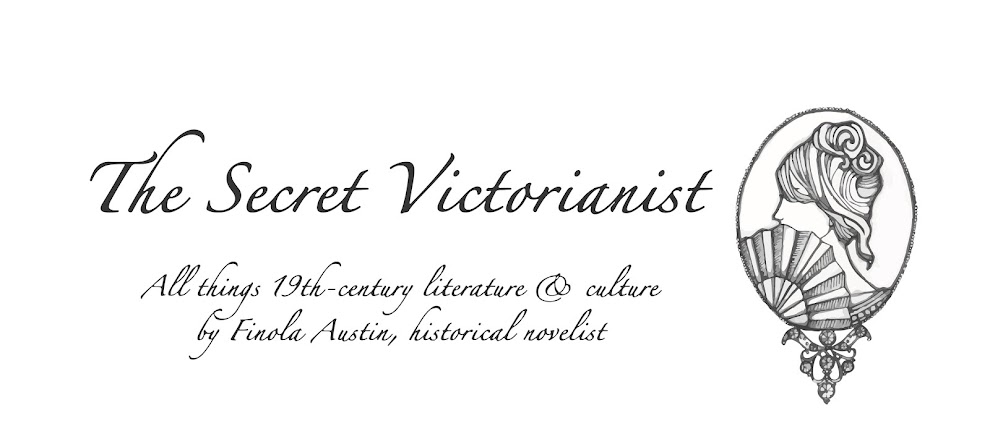Merry Christmas for a second year from the Secret
Victorianist! Last year, at Christmas, I treated you to a tricky literary quiz
and suggested some nineteenth-century party games to try with friends and
family. This year, I’m taking a look at a Christmas poem from the period –
‘Christmas Bells’ by Henry Wadsworth Longfellow (1864).
I heard the bells on
Christmas Day
Their old, familiar carols play,
And wild and sweet
The words repeat
Of peace on earth, good-will to men!
And wild and sweet
The words repeat
Of peace on earth, good-will to men!
And thought how, as the day had come,
The belfries of all Christendom
Had rolled along
The unbroken song
Of peace on earth, good-will to men!
The belfries of all Christendom
Had rolled along
The unbroken song
Of peace on earth, good-will to men!
Till ringing, singing on its way,
The world revolved from night to day,
A voice, a chime,
A chant sublime
Of peace on earth, good-will to men!
The world revolved from night to day,
A voice, a chime,
A chant sublime
Of peace on earth, good-will to men!
Then from each black, accursed mouth
The cannon thundered in the South,
And with the sound
The carols drowned
Of peace on earth, good-will to men!
It was as if an earthquake rent
The hearth-stones of a continent,
And made forlorn
The households born
Of peace on earth, good-will to men!
The cannon thundered in the South,
And with the sound
The carols drowned
Of peace on earth, good-will to men!
It was as if an earthquake rent
The hearth-stones of a continent,
And made forlorn
The households born
Of peace on earth, good-will to men!
And in despair I bowed my head;
“There is no peace on earth,” I said;
“For hate is strong,
And mocks the song
Of peace on earth, good-will to men!”
“There is no peace on earth,” I said;
“For hate is strong,
And mocks the song
Of peace on earth, good-will to men!”
Then pealed the bells more loud and deep:
“God is not dead, nor doth He sleep;
The Wrong shall fail,
The Right prevail,
With peace on earth, good-will to men.”
“God is not dead, nor doth He sleep;
The Wrong shall fail,
The Right prevail,
With peace on earth, good-will to men.”
Longfellow’s poem begins in self-conscientiously typical
festive fashion, referencing the cyclical nature of Christmases – each one
resembling the last -, in the ‘familiar carols’ and regular bells of Christmas
morning. There is reference to the longevity of Christmas in the use of words
from the very first Christmas ‘carol’, the words of the angels to the shepherds
in the Nativity story, ‘peace on earth, good-will to men!’.
More than this, the poet imagines that this cry has ‘rolled
along’ continuously, as an ‘unbroken song’, since the birth of Christ,
spreading around the world. Longfellow conveys this idea of global harmony,
through use of singulars for the collective celebration - ‘A voice, a chime,/A
chant sublime’.
 |
| The Angel Appearing Before the Shepherds, Thomas Buchanan Read |
Soon however, this harmony is broken, for the poet and the
world, by a disruptive force – the American Civil War. The sound of war (the
‘cannon’, emanating in the South) ‘drowns’ out this announcement of peace,
suggesting the poet, and his countrymen’s, hopelessness. The domestically
destructive nature of a civil war is
suggested through the use of language suggestive of home for the American
continent (‘It was as if an earthquake rent,/The hearth-stones of a continent’) and reference to the, explicitly
Christian, ‘households’ now suffering from war, while founded on a theology of
peace.
In the final two stanzas, we are given two reactions to
this. The poet despairs (‘hate is strong’), only, apparently, to be answered by
a message of hope about the continuance of God (‘God is not dead, nor doth He
sleep’), despite the current violence. However, the evenness of these stanzas
(it’s not as if Longfellow introduces a second of celebration) means the poem
does not end on an entirely convinced and joyous note. The sounds of peace and
happiness, which begin the poem, do not return – the only comfort is the
promise that they will. And it is
even hinted, that this will come, not simply through the end of war, but
through the military success of the ‘right’ side (‘The Wrong shall fail,/The
Right prevail’).
What should be ‘Y’ in my American Alphabet? Let me know –
here, on Facebook or by tweeting @SVictorianist!




